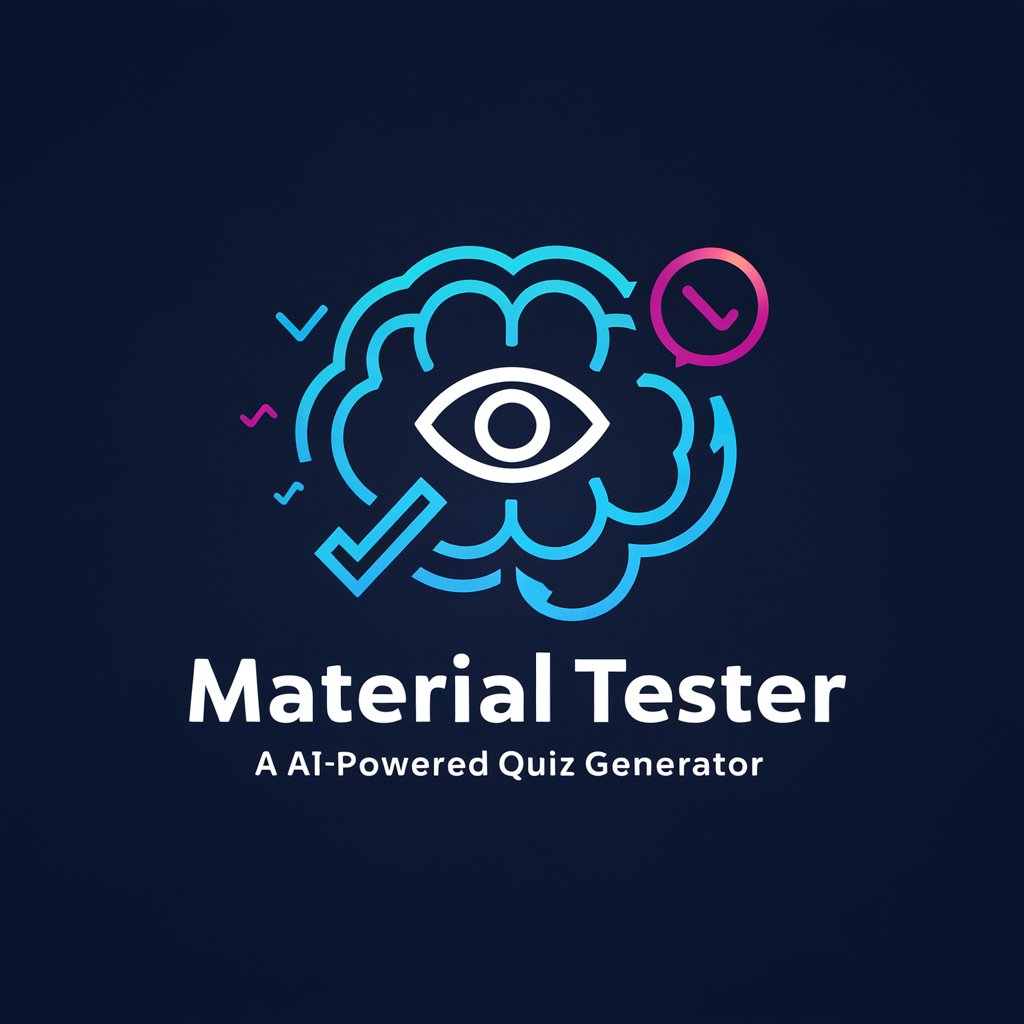QA Test Case Generator - AI-powered test case generator

Hello
AI-driven, comprehensive test case generation
Please help me generate test cases
Upload A Screenshot
Get Embed Code
Introduction to QA Test Case Generator
QA Test Case Generator is designed to streamline the creation of comprehensive test cases for software quality assurance. Its primary purpose is to assist QA professionals in designing test cases that cover all possible scenarios, including functional, edge, and negative cases. It provides a structured approach to testing by generating user-centric test cases based on specified requirements, acceptance criteria, or screenshots. By automating the generation process, it ensures consistency, reduces human error, and saves time in the test design phase. For example, if a QA tester is given the requirement to test a new login feature, the tool can generate test cases covering standard login processes, invalid login attempts, and edge cases like network failures during login attempts. The tool's flexibility also allows it to handle various inputs, including textual descriptions and visual components like screenshots, ensuring that all UI and UX elements are tested thoroughly. Powered by ChatGPT-4o。

Main Functions of QA Test Case Generator
Test Case Generation Based on Requirements
Example
Given a requirement to test a shopping cart's 'Add to Cart' feature, the generator can automatically create test cases that check normal item addition, multiple item addition, empty cart scenarios, and handling of stock-out conditions.
Scenario
A QA team working on an e-commerce platform needs to test the shopping cart functionality. By inputting the acceptance criteria of the 'Add to Cart' feature, the generator creates detailed test cases ensuring full coverage, including standard workflows and edge cases.
Edge Case Identification
Example
If a feature involves uploading a profile picture, the tool can create test cases for valid images, oversized files, unsupported formats, and network failures during uploads.
Scenario
In an app that allows users to upload profile pictures, potential problems like unsupported image formats or large file sizes could go unnoticed. The tool generates edge case tests such as 'upload image with 0 bytes,' 'upload image with 10MB size,' and 'upload unsupported format (e.g., .txt file),' ensuring robustness in various scenarios.
Screenshot-Based Testing
Example
A QA tester uploads a screenshot of a product page in an app, and the tool generates test cases for verifying UI elements such as buttons, images, and product descriptions, along with their expected behavior.
Scenario
When testing a new UI for a mobile app's product display page, the tool can generate test cases that check image loading, button functionality (e.g., 'Buy Now'), text assertions (e.g., correct product name), and alignment of elements on different screen sizes.
Risk and Mitigation Planning
Example
For a feature requiring user authentication via email, the tool highlights potential risks like 'Email not received' and provides mitigation strategies such as testing email server configurations and email delivery times.
Scenario
In a financial app that sends two-factor authentication codes via email, the tool generates test cases for scenarios where the email is delayed or not delivered. Additionally, it identifies risks like server downtime and suggests mitigation like fallback to SMS.
Gap Identification and Question Generation
Example
For a requirement involving international shipping, the tool might generate questions like 'What happens if a shipping address is invalid?' and 'What are the supported countries for shipping?'
Scenario
In a logistics management system, a QA tester needs to validate international shipping features. The tool helps identify missing details in requirements, such as unsupported regions, by generating questions that highlight potential gaps or ambiguities in the system’s logic.
Ideal Users of QA Test Case Generator
QA Testers
QA testers, especially those working in agile environments, can greatly benefit from using the tool to generate comprehensive test cases quickly. It ensures consistency across testing efforts and helps testers identify edge cases they may overlook manually, improving overall software quality.
Software Developers
Developers who practice Test-Driven Development (TDD) or want to ensure that their code is thoroughly tested before release can use the generator to create test cases based on their feature implementations. This ensures they account for edge cases and reduce the likelihood of bugs reaching production.
Product Managers
Product managers who need to verify that their product’s functionality is being tested correctly can use the tool to ensure that QA teams are covering all key scenarios. This gives them confidence that the features will behave as expected when deployed to users.
Automation Engineers
Automation engineers can use the test cases generated by the tool to feed into automated testing suites. The detailed test cases help ensure that automation scripts cover both standard functionality and edge cases, improving test coverage.

How to Use QA Test Case Generator
Visit yeschat.ai for a free trial
Access the QA Test Case Generator tool without the need for login or ChatGPT Plus. It's quick and hassle-free to get started.
Familiarize yourself with your requirements
Prepare the software requirements, acceptance criteria, or any screenshots relevant to the testing process to ensure you input the correct information.
Input the acceptance criteria or upload visuals
Provide the necessary details for test case generation, such as user stories, screenshots, or acceptance criteria. This will enable the tool to generate accurate test cases.
Review and edit generated test cases
After test cases are generated, carefully review them for coverage and correctness. Modify the steps or expected results as needed.
Export or share test cases
Export the test cases to your preferred format or share them with your QA team for implementation and further review.
Try other advanced and practical GPTs
MeckerZusammenfassung
Uncover Real Critiques with AI

Sports Game Analyst
Empower Your Game with AI Insight

Culinary Innventorator
AI-Powered Culinary Creativity

Quest Scribe
Craft Compelling RPG Tales

Material Tester
Customize, Learn, Excel: AI-Powered Study Boost

Material Maven
Demystifying materials science with AI power.

Astronaut Hipparchus Odessa
Explore the cosmos with AI-powered insights

Crônicas da Segunda Guerra Mundial (2ª GM)
Explore WWII with AI-powered insights

Soma Pontuações
Effortlessly Sum and Sort Scores

Explorador inglês
Explore English with AI-powered insights

Expert Apache POI assistant
Power your presentations with AI-driven code.

RAMS Engineering Advisor
Empower Your Engineering with AI-Driven RAMS Insights

Common Questions about QA Test Case Generator
What types of test cases does the QA Test Case Generator produce?
The QA Test Case Generator creates functional, edge case, and user-centric test cases based on software requirements, acceptance criteria, and visual input such as screenshots.
Can I upload screenshots to generate test cases?
Yes, the tool allows you to upload screenshots to analyze UI components, text, and images, generating appropriate test cases for functional and visual verification.
Does the QA Test Case Generator cover edge cases?
Absolutely. It not only generates standard test cases but also considers edge cases by analyzing possible boundary conditions and uncommon scenarios that might arise during testing.
What kind of requirements are needed for generating test cases?
You can input acceptance criteria, user stories, or even general software specifications. The tool will convert these into detailed test steps and expected results.
Can I customize the test cases after they are generated?
Yes, you can fully customize the generated test cases. This includes editing steps, adding or removing test cases, and adjusting the expected outcomes to suit your needs.
